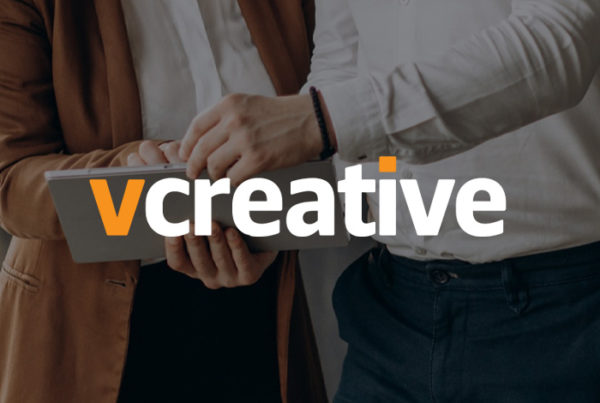The NAB 2022 Show was a huge success for the broadcast industry. More than 50,000 attendees were in Las Vegas for the show’s first in-person conference since the pandemic. With engaging keynote speakers, educational sessions and lots of networking, there were so many trends that had broadcasters talking. We’re recapping those along with some insights on why they’re important.
State of Industry
NAB president and CEO Curtis LeGeyt opened the event with a state of the industry address. He pointed out many priorities for the association.
Congress Should Act on Big Tech to Alleviate Local News Losses
LeGeyt called for Congress to “rein in the gatekeeping ability” of tech giants that are hurting the economics of local news. He cited a study that found that local broadcasters lose $2 billion annually when consumers access this content through Google and Facebook. He also noted that when local news suffers, it harms audiences.
Modernizing Media Ownership
Next, LeGeyt spoke about the need for the FCC (Federal Communications Commission) to modernize its regulation of media companies to reflect modern times. He suggested that the FCC should “reorient how it thinks about broadcast policy more broadly.” Broadcaster relationships with the FCC and NAB’s position were the focus of LeGeyt’s fireside chat with FCC chairwoman Jessica Rosenworcel.
He also noted that while broadcast stations have licenses to provide a free service to local communities, their ability to do so relates to their economic viability.
Streaming and OTT/CTV
There was lots of chatter about streaming platforms and how they impact broadcast TV. Just recently, Netflix lost subscribers for the first time in 10 years. There were predictions that the streaming market winner would soon follow in line with its competitors with an ad-supported option. If so, that would be huge for the OTT/CTV advertising channel.
The number of streaming platforms currently available seems to grow daily. Is it too much? Will consolidation occur in the future?
There were also discussions around how local public broadcasters deliver content to OTT platforms, featuring PBS chief digital and marketing officer Ira Rubenstein. He touted PBS’ partnerships with YouTube TV and DirecTV Stream. The same is true for local TV stations that can stream “live” on these platforms.
OTT/CTV advertising for local broadcasters was also a hot topic. It represents a significant opportunity for radio and TV digital ad sales. In addition to its popularity and billions of subscribers, OTT/CTV offers advanced targeting options. As a result, local advertisers can connect directly with the audiences they desire.
When advertisers use this ad type, they can reach cord-cutters (those who don’t subscribe to cable or satellite TV). With CTV, they also get the advantage of playing on a big screen at an often-lower cost than broadcast TV.
Audio Listener Trends
New research on audio listener trends at NAB 2022 showed both good and not-so-good news for broadcast radio. That included the Share of Ear analysis report and the 2022 Audioscape. Here are some highlights from these reports:
- AM/FM radio has a 40% share of audience across all audio types, meaning other platforms, both ad-free and ad-supported, now have a 60% share.
- AM/FM radio still leads for ad-supported audio with a market share of 68%. Podcasts are gaining here, but ad-supported Pandora, Spotify and SiriusXM stayed mostly flat or declined.
- AM/FM accounts for 76% of daily audio time on ad-supported platforms.
- AM/FM radio has the greatest share for listening at home or work and in the car.
- The pandemic had little effect on AM/FM radio share of ear, down to 76% in 2021 from 79% in 2019.
- 13% of listening on smart speakers is AM/FM radio, which increases to 39% for ad-supported content.
- 88% of all in-car audio is AM/FM radio, reaching demographics of all those aged 18 and over.
The bottom line is that AM/FM radio still has great reach and dominates ad-supported content. While it has lost audiences in terms of overall audio options, there are still reasons to be optimistic about the future of broadcast radio.
How Radio and TV Pivoted During the Pandemic and Drove Sponsorship Revenue
Sponsorship revenue is critical for small- and mid-market radio and TV stations. Events fell off the books when the pandemic lockdowns began in early 2020. It left broadcasters with a need to feed revenue but do so in unique and creative ways. Panels from radio and TV provided examples and case studies of how they did it.
The radio panel featured participants from Beasley Media Group, Radio One and Salem Media Group. They shared case studies of what they were able to do in the absence of in-person events. Many hosted virtual ones along with community-based programs benefiting small businesses and nonprofits.
Attendees also learned about sponsorships focusing more on outside events and how a university’s desire to expand online enrollment led to a very profitable radio and OTT campaign.
The TV panel included leaders from Allen Media Broadcasting, Marquee Broadcasting, Gray Television and Nexstar Media Group. They showcased local programming that drove sponsorship revenue, including:
- Community lifestyle content that featured small businesses
- Local musician showcases
- Local weather personalization campaigns (where viewers request personal forecasts)
- Open house announcements sponsored by real estate agents
- Shop local programming
NextGen TV Is Here
The technology to roll out NextGen TV was on full display at the show. There were many impressive tech demos on the equipment side.
Marketron’s SVP of sales, Todd Kalman, moderated a panel on the topic at the show. The panel included executives from Sinclair Broadcast Group, Nexstar Media Group, NBCUniversal, Pearl TV and E.W. Scripps Company.
The group discussed the technology’s implementation and the challenges associated with it. They also talked about its role as a revenue generator. NextGen TV ushers in a new opportunity for ad dollars. What makes it so attractive is that it’s O&O (owned and operated) inventory, so you can collect valuable first-party data. It also has very specific targeting capabilities, allowing you to build the right audience for your advertisers. Local TV stations can also consider NextGen TV as a channel for local programming that’s ad-supported but in a different way than typical broadcast TV.
Controversial Ad Categories
Another topic of consequence to our customers was discussions on controversial ad categories for radio. It was a sub-topic of the Small and Medium Market Radio Forum. Since the federal government (FCC) governs radio advertising, they can’t capitalize on new advertisers entering the market in the cannabis industry.
Regardless of whether it’s legal in your state, it’s still a no-go. Thus, these dollars are going to OOH (out of home), print and local TV. There was a question about advertising for clinicians or organizations that help consumers get medical marijuana licenses. It’s a “gray” area but could still be subject to FCC noncompliance.
CBD is another category. The 2018 Farm Bill removed hemp and derivatives with no more than 0.03% THC as a Schedule I drug. However, it didn’t “fully” legalize it. It’s a very complex area requiring validating a product’s legality. As such, most stations continue to reject it as an ad category.
The other major ad category of note was online sports betting. It’s clearer cut than the others and is perfectly legal to advertise if it’s permitted in your state. Radio is already cashing in on the trend. For the 21 states (and Washington, D.C.) that have operations, it’s a category that can certainly accelerate your radio OTA revenue!
NAB 2022 Trends: What’s Next?
We enjoyed NAB 2022 and learned a lot. Be sure to check in on the Marketron blog and Aspire for new content related to many of these broadcast trends in the next few weeks.






